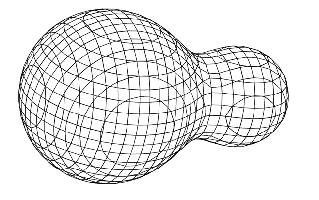I don't know if you've heard of this before, but there is an extremely elegant physical proof of the existence and properties of the Fermat point. It even illustrates the degeneracy that starts to occur for largest angle at least $2\pi/3$.
Consider your desired triangle as a flat, sturdy, sheet. Make very small notches at the vertices. Now take three ideal ropes and at one end of each fix identical balls. Join all three free ends. Place the rope-ball configuration on the top of the triangle, and slide each of the ropes through the notches. Let the balls hang off the triangle.
Now, allow the system to assume its minimal potential energy. The intersection of the ropes will move to minimize the sum of the distances to the vertices, as potential energy is linear in height. So the intersection will move to the Fermat point.
But here is the tricky part. As the intersection stabilizes, we know that the forces on it must be zero. The forces all have the same magnitude, so if they are all zero then they must have equal angles between them. So the lines from the Fermat point X to the vertices of triangle ABC satisfy $\angle AXB = \angle BXC = \angle CXA = 2\pi/3$.
Of course, this suggests that in a suitably obtuse triangle the intersection will fall right through one of the notches, and indeed for angles greater than $2\pi/3$ the Fermat point is at the largest angle.



